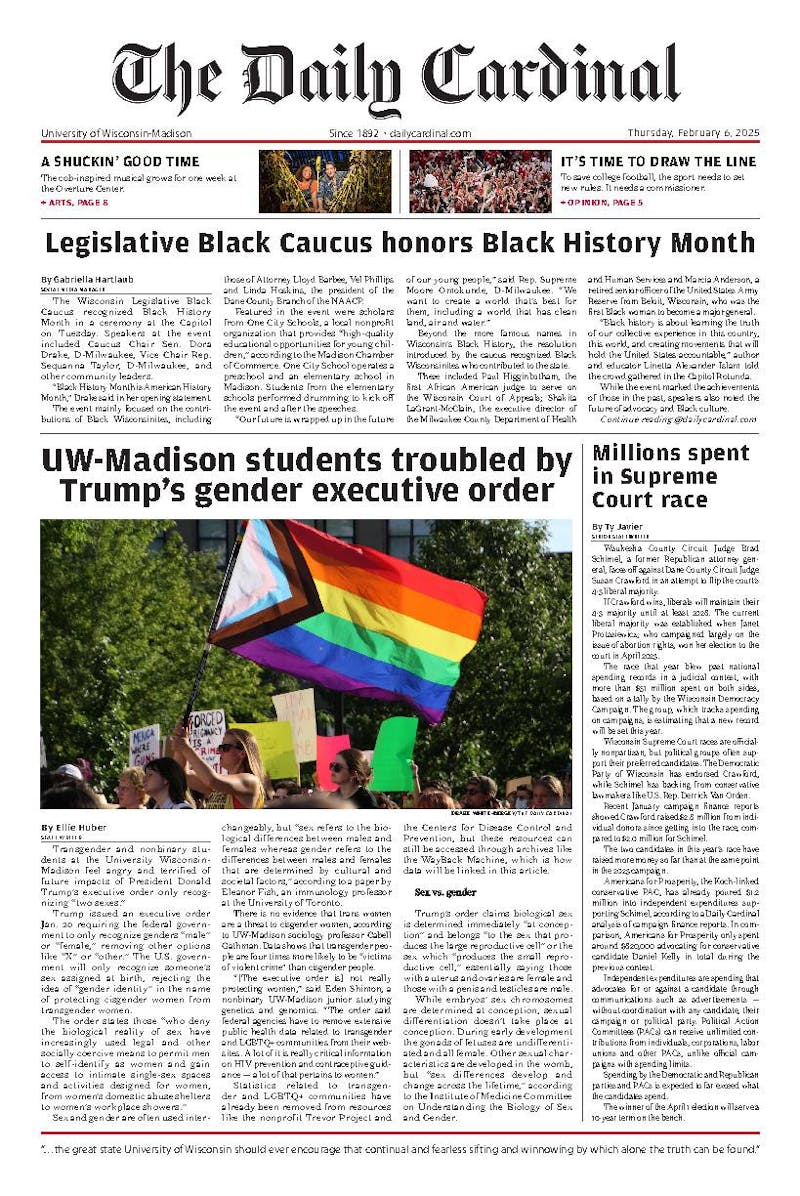Mark Twain once wrote in regards to the water of the Mississippi River, ""It is good for steamboating, and good to drink; but it is worthless for all other purposes, except baptizing."" His statement is extremely inaccurate: the water is a very versatile and important resource, but it is not safe to drink.
In recent years, pollution has unfortunately become a massive problem for those who live near and depend on the Mississippi River.
Such pollution is of major concern because the Mississippi is a massive river system. According to the National Park Service, the Mississippi River is approximately 2,500 miles long and its watershed covers 1,837,000 miles, 40 percent of the United States including 31 states and two Canadian provinces. About 15 million people depend on the Mississippi for water supply, and the agricultural importance to the country is enormous. Sixty percent of all grain exported is floated down a river barge. Furthermore, 260 fish species are found in the Mississippi, and 40 percent of all migratory birds in the continent use the Mississippi Corridor.
An array of toxins and nutrients threaten the Mississippi way of life for both wildlife and humans. A 1995 U.S. Geological Survey study, however, found that the river contains an unhealthy amount of nutrients, chemicals and heavy metals. Such pollution leads to the destruction of human health and wildlife diversity. The effects are best exemplified by the staggering 6,600 square mile dead zone in the Gulf of Mexico, according to the environmental organization Green Nature. Nutrient overload has led to massive algae growth in the gulf at the end of the Mississippi, causing a lack of oxygen for fish and other wildlife.
Such drastic consequences have sparked action from those interested in stopping the slippery slope the Mississippi is heading down. According to a case study by the Mackinac Center, government agencies have cracked down on large industries such as factories, food processing plants, slaughterhouses and sewage treatment plants, to keep them from dumping their waste into the waters. Although this is a fantastic start to the solving the problem, it is only a beginning. Such action only affects point source pollution.
Point source pollution is characterized by having a single, identifiable source, as in industrial discharge—a common example are pipes running directly into water. According to the Mackinac Center the Clean Water Act regulation targets mainly point source pollution. This does not account for the massive toll from non-point source pollution, differentiated from point source as coming from a more obscure source not as easily identifiable as a drainage pipe. Non-point source pollution is usually caused by agricultural activity and humans living adjacent to rivers. The Mackinac Center states that up to 90 percent of Mississippi River pollution originates from a non-point source.
In the past 20 years, people have begun to organize in the name of saving the Mississippi. Groups such as The Mississippi River/Gulf of Mexico Watershed Nutrient Task Force, Pamlico/Tar River Project and Reinvest in Minnesota have formed a progressive and cooperative brainstorming of industry leaders and environmentalists to reduce non-point source pollution.
Programs have been created to purchase conservation easements along the rivers of the Mississippi watershed, which act as buffers between developed land and the waterside. They act to filter out nutrients and contaminants before they ever reach flowing water. Conservation easements are vital to the success of reducing nonpoint source pollution.
Money must be raised to reimburse farmers for setting aside land along the water's edge, whether in the form of tax breaks or direct payment. Such measures may affect tax rates, but the government must take action.
It is also vital to educate farmers and homeowners alongside water in pollution reduction techniques. Irresponsible or uneducated use of manure, commercial fertilizers, pesticides and insecticides is a major source of water pollution. Many cities outlaw the use of lawn fertilizer containing phosphorus, and many more areas should follow. High school curriculum should include responsible lawn care and agricultural education programs should touch on proper watershed care. Education is perhaps the most powerful tool in the fight to save the environment.
Action cannot be taken only alongside the Mississippi River itself. All the rivers and streams dumping into it contribute to its pollutant levels, including the Missouri and Ohio Rivers. The entire watershed of the Mississippi, from the largest river to the smallest stream, must receive equal protection if the cleanup effort is to be effective.
The job of de-polluting the Mississippi River is not a small task, but it is imperative to the vitality of the American people and wildlife. We must provide conservation easements along the rivers of the Mississippi River watershed and educate the next generation about saving the Mississippi.
If Mark Twain could explore the mighty Mississippi today, he would be sadly disappointed. A cleaner, healthier Mississippi is necessary for a cleaner, healthier America.
Donnie Radcliffe is a freshman majoring in biomedical systems engineering. Please send all feedback to opinion@dailycardinal.com.






